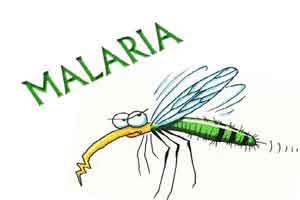- Home
- Editorial
- News
- Practice Guidelines
- Anesthesiology Guidelines
- Cancer Guidelines
- Cardiac Sciences Guidelines
- Critical Care Guidelines
- Dentistry Guidelines
- Dermatology Guidelines
- Diabetes and Endo Guidelines
- Diagnostics Guidelines
- ENT Guidelines
- Featured Practice Guidelines
- Gastroenterology Guidelines
- Geriatrics Guidelines
- Medicine Guidelines
- Nephrology Guidelines
- Neurosciences Guidelines
- Obs and Gynae Guidelines
- Ophthalmology Guidelines
- Orthopaedics Guidelines
- Paediatrics Guidelines
- Psychiatry Guidelines
- Pulmonology Guidelines
- Radiology Guidelines
- Surgery Guidelines
- Urology Guidelines
Mated female mosquitoes more likely to transmit Malaria, finds study

Dr Farah Dahalan of Imperial College London, Mara Lawniczak from the Wellcome Sanger Institute, and colleagues have found that Female mosquitoes that have mated are more likely to transmit malaria parasites than virgin females. The results of this study imply that efforts to target male mosquitoes might not only suppress mosquito populations but also act to decrease vector competence among residual females. The study has been published in the open-access journal PLOS Pathogens.
According to WHO Malaria is a life-threatening disease caused by parasites that are transmitted to people through the bites of infected female Anopheles mosquitoes. It is preventable and curable. In 2017, there were an estimated 219 million cases of malaria in 87 countries. It is a mosquito-transmitted disease, caused by the parasite Plasmodium falciparum, that kills more than 400,000 people and infects more than 200 million people worldwide annually.
Existing vector control measures rely on continued mosquito susceptibility to various insecticides, but resistance has evolved to all four insecticide classes currently in use, and new vector control strategies, including strategies that target reproduction, are sorely needed. Several species of Anopheles are responsible for the majority of transmission in Africa, where the disease causes the most morbidity. In Anopheles mosquitoes, levels of the hormone 20-hydroxyecdysone (20E) in females can be influenced by two major factors: blood-feeding and mating. In the new study, Dahlan and colleagues investigate the impact of both mating and 20E on female mosquito susceptibility to P. falciparum.
Farah Dahalan says “If male-derived 20E enhances vector competence of mated females in nature, then male mosquitoes may be contributing to malaria transmission in previously unappreciated ways. It is possible that vector control strategies that target males may have additional benefits toward reducing transmission.”
Citation: Dahalan FA, Churcher TS, Windbichler N, Lawniczak MKN (2019) The male mosquito contribution towards malaria transmission: Mating influences the Anopheles female midgut transcriptome and increases female susceptibility to human malaria parasites. PLoS Pathog 15(11): e1008063. https://doi.org/10.1371/

Disclaimer: This site is primarily intended for healthcare professionals. Any content/information on this website does not replace the advice of medical and/or health professionals and should not be construed as medical/diagnostic advice/endorsement or prescription. Use of this site is subject to our terms of use, privacy policy, advertisement policy. © 2020 Minerva Medical Treatment Pvt Ltd